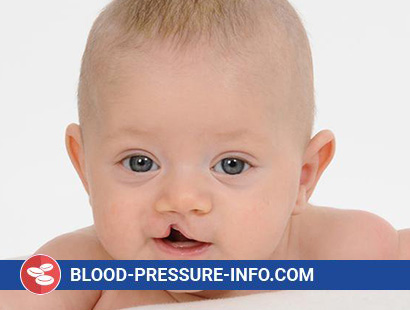What is Di Guljelmo’s Disease?
This leukemia was first described in 1917 by Di Guglielmo. Acute erythromyeosis occurs in adults in approximately 5% of cases of all forms of non-impaired acute leukemia, in children – in 0.6%. A history of patients with acute erythromyelosis is often radiation or chemotherapy: this form of acute leukemia is most often described as secondary leukemia in patients with Hodgkin’s disease, myeloma, and erythremia.
Symptoms of Di Guljelmo’s Disease
In most cases, the onset of acute erythromyelosis is characterized by an anemic syndrome, which grows slowly, accompanied by mild jaundice. Anemia is usually moderately hyperchromic, in the patient’s blood there are erythrocaryocytes, while reticulocytes are not more than 1-3%. The blood picture may be aleukemic, but as the disease progresses, leukemia occurs: either erythrocaryocytes, or blasts, or both of them enter the blood. Leukopenia, thrombocytopenia is often observed from the very beginning, sometimes appearing later. Bilirubin is slightly increased due to the indirect fraction.
Unlike previous forms of acute leukemia, where the diagnosis was based on the detection of atypical blast cells in bone marrow punctate, in acute erythromyeosis, punctate often becomes a mystery in itself.
Diagnosing Di Guljelmo’s Disease
This disease is characterized by a sharp increase in the content of red cells in the bone marrow. This pattern occurs with hemolytic and B12-deficient anemia, with ineffective hematopoiesis of any nature, namely with the destruction of erythro-cryocytes. In contrast to other forms of acute leukemia in acute erythromyelosis, the differentiation of red tumor cells often occurs before the stage of polychromatophilic and oxyphilic erythrokaryocytes or into erythrocytes. However, along with the cells of the red row, sometimes atypical, multi-core, in the bone marrow, and later in the blood appear blast elements, which allow you to make a diagnosis.
According to the morphology of blast cells, erythromyelosis is divided into two options: erythromyelosis proper, in which the tumor substrate is represented by erythrocyocytes and undifferentiable blasts, and erythroleukemia, in which, along with erythrocyocytes, there are many myeloblasts.
In the first variant, a gradual transition to the predominance of non-differentiable blasts occurs, in the second, to myeloblastosis. The clinical differences between these options are indistinct.
In cases where there is marked suppression of normal hematopoietic sprouts (leuko-, thrombocytopenia, anemia, reticulocyte content no more than 2–3%), and in the bone marrow there is an abundance of ugly erythrocaryocytes and many atypical undifferentiated blast cells or myeloblasts, a diagnosis of an earlobe obvious. If morphologically, the red row cells differ little from normal, undifferentiated blast cells a little (up to 10%), and there are no distinct signs of oppression of normal hematopoietic sprouts in peripheral blood, then it is not possible to diagnose acute erythromyelosis with certainty.
In this situation, the discovery of proliferates of undifferentiated cells in trepanate testifies in favor of this diagnosis. In the case of acute erythromyelosis, the percentage of blast cells in the bone marrow must necessarily increase in dynamics.
Under no circumstances should a cytostatic treatment be carried out until the diagnosis is determined accurately. Until such time, small doses of prednisone, symptomatic therapy (blood transfusion with deep anemia) should be used in therapy in order not to impede further diagnosis.
The study of the chromosomal apparatus of bone marrow cells plays an important role in the diagnosis of erythromyelosis: when an aneuploid clone is detected in the cells of the red row, the diagnosis can be considered proven.
Aneuploidy in this disease occurs in approximately 40% of cases. Random (without clone formation) aneuploidy in the red sprout is not a sign of tumor growth, since this phenomenon occurs in hemolytic anemia and in pernicious anemia. Acute erythromyelosis is characterized by changes in the chromosomal set of leukemic cells: more often than with other forms of leukemia, there are various structural changes in the chromosomes.
The erythrocyte morphology in erythromyelosis is different. Usually, as with other acute leukemia, despite anemia, there is no anisocytosis, poikilocytosis. If anisocytosis is present, then it is not as sharp as with B12-deficient anemia, nor is there a characteristic neutrophil polysegmentation for it. Hyperchromia of erythrocytes is often observed with an increase in the color index to 1.2-1.3.
There is no typical pathology of the internal organs in acute erythromyelosis. Lymph nodes are usually not enlarged; the liver and spleen, as with other forms of acute leukemia, may increase, but more often remain normal.
The dynamics of hematological indicators can have two directions: in one case, the number of blast cells increases both in the bone marrow and in peripheral blood, up to almost complete replacement of the pathological red sprout, in others – to the very end, the bone marrow maintains a high content of red row elements. with a moderate increase in the percentage of blast cells. It should be noted that both in one and in the other case, granulocytopenia, thrombocytopenia and anemia naturally intensify. As with other forms of acute leukemia, insufficiency of blood formation causes the death of patients.
Despite the relative rarity of a complete improvement, acute erythromyelosis is not characterized by rapid progression. The average life expectancy of patients is about 6 months, and 20% of patients live for about 2 years or more. However, it is usually not possible to slow down the process, to obtain a distinct improvement in the blood composition during treatment with cytotoxic drugs and red cell transfusions.

